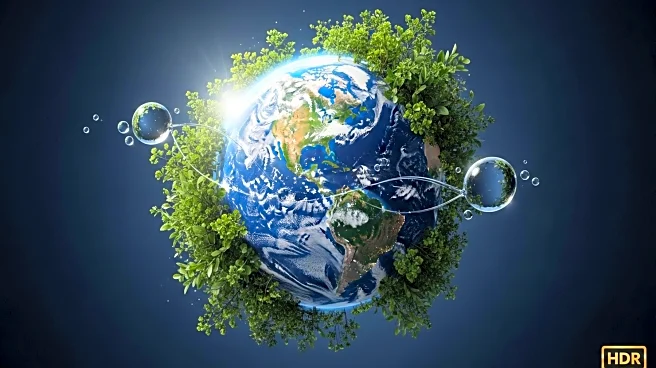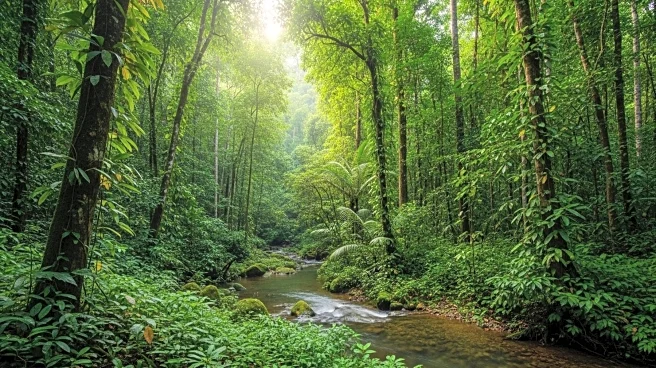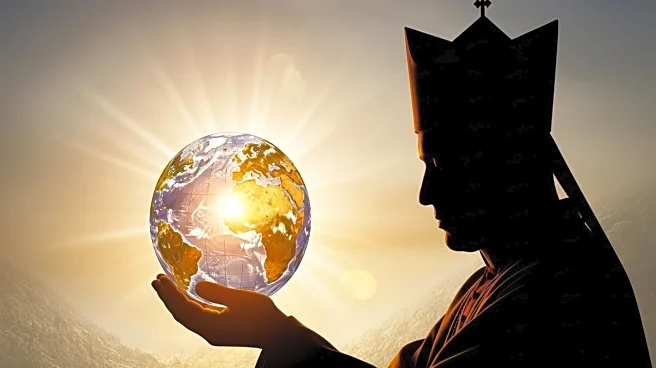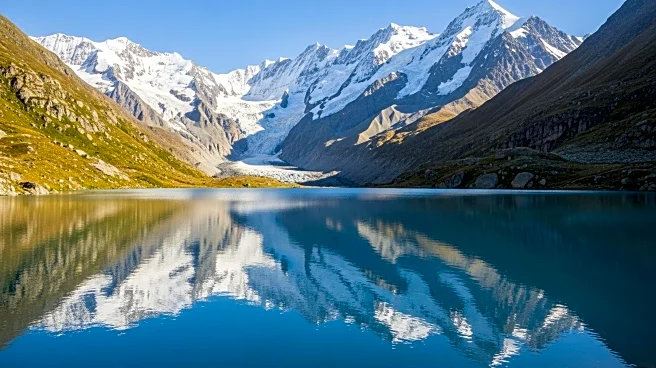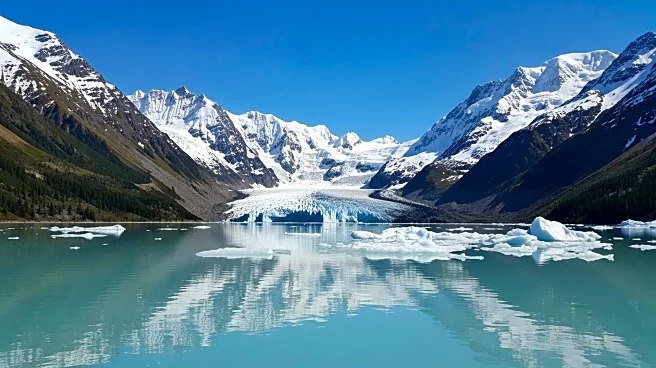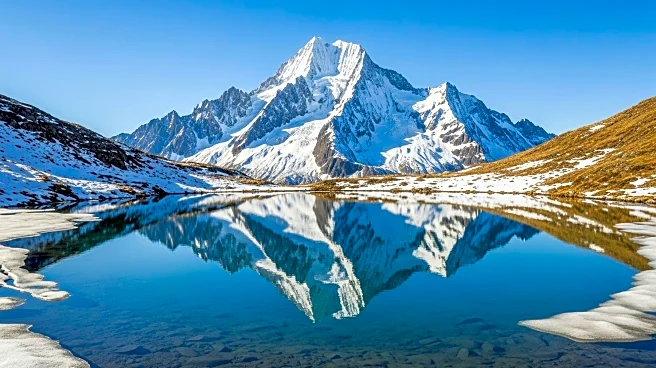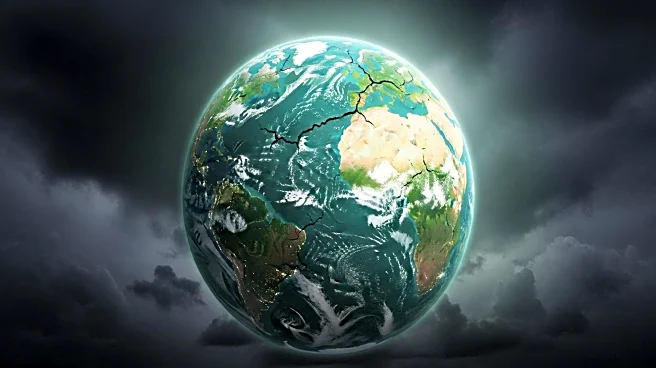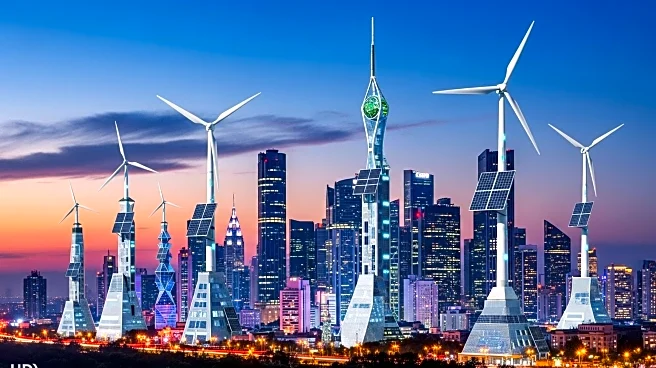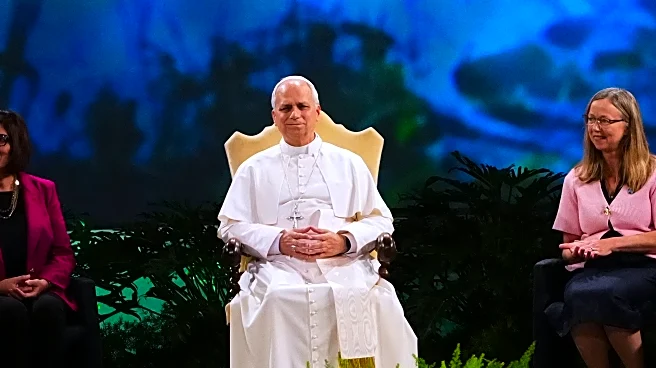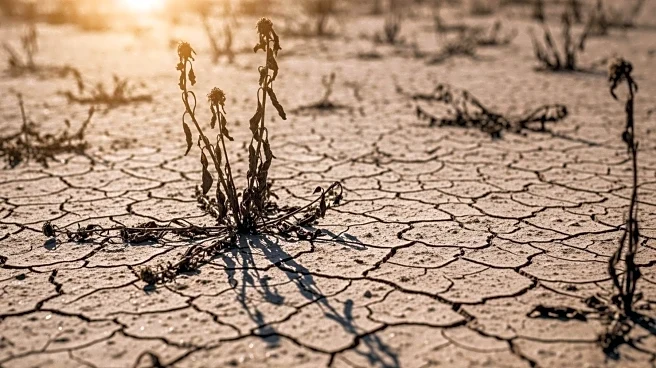What's Happening?
Olafur Eliasson, an Icelandic-Danish artist renowned for his ecological installations, has brought attention to the climate crisis by transporting a 20,000-year-old block of Greenlandic glacial ice to Rome. This ice block, which traveled over 5,000 kilometers from Nuuk, Greenland, was blessed by Pope Leo XIV during the Raising Hope for Climate Justice conference. The event precedes the 2025 United Nations Climate Change Conference (COP 30) in Brazil. Eliasson, with the support of geologist Minik Rosing, arranged for the ice to be part of the conference to emphasize the tangible effects of climate change. NASA estimates that Greenland's ice sheet is losing approximately 270 billion tonnes annually due to climate change. Eliasson has previously engaged in similar projects, such as Ice Watch, where ice blocks were placed in public spaces to melt, making scientific data more palpable to the public.
Why It's Important?
This event underscores the urgent need for global awareness and action on climate change. By involving a high-profile figure like Pope Leo XIV, Eliasson's project gains significant attention, potentially influencing public opinion and policy. The melting of Greenland's ice sheet is a critical indicator of climate change, with far-reaching implications for global sea levels and ecosystems. The artistic approach of making scientific data 'feelable' aims to bridge the gap between abstract data and public perception, potentially galvanizing more robust climate action. Stakeholders in environmental policy, science, and the arts stand to gain from increased awareness and potential policy shifts resulting from such high-profile events.
What's Next?
The Raising Hope for Climate Justice conference sets the stage for the upcoming COP 30 in Brazil, where global leaders will convene to discuss and negotiate climate policies. The involvement of influential figures and artists like Eliasson may inspire more creative and impactful approaches to climate advocacy. As the conference approaches, stakeholders will likely prepare to address the pressing issues highlighted by Eliasson's work, potentially leading to new commitments or initiatives aimed at mitigating climate change.
Beyond the Headlines
Eliasson's work also raises questions about the role of art in social and environmental advocacy. By using art to make scientific data more accessible, Eliasson challenges traditional boundaries between disciplines, suggesting a more integrated approach to addressing global issues. This could inspire other artists and scientists to collaborate, potentially leading to innovative solutions and increased public engagement with complex issues like climate change.

